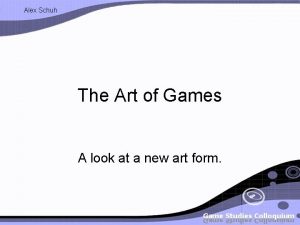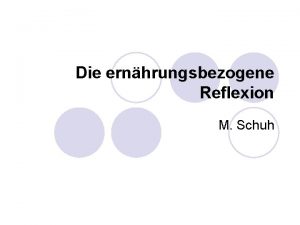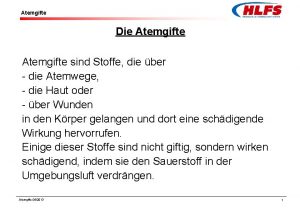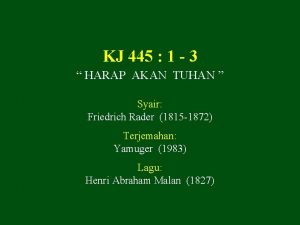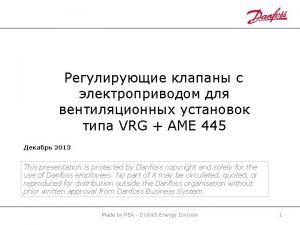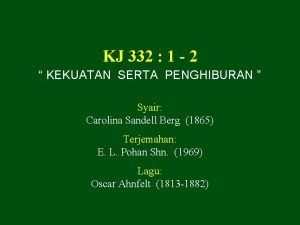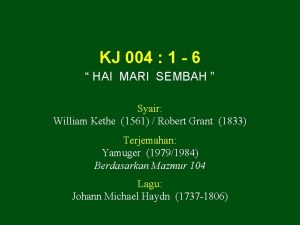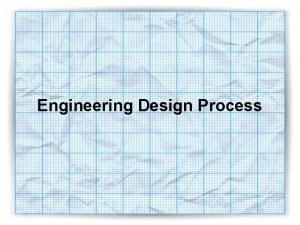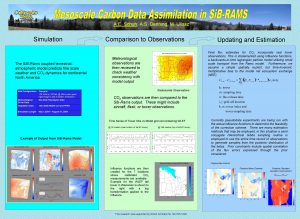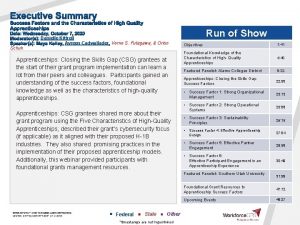Design Process Jonathon Schuh ECE 445 Design vs



























- Slides: 27

Design Process Jonathon Schuh ECE 445

Design vs. Analysis Formulation https: //www. google. com/url? sa=i&source=images&c d=&ved=2 ah. UKEwilj. Htiprn. Ah. VIVs 0 KHa 8 q. BE 0 Qj. Rx 6 BAg. BEAQ&url=https%3 A%2 F%2 Fwww. worldsteel. org%2 Faboutsteel. html&psig=AOv. Vaw 1 whvktt. Eljgk. U 3 xr 1_742 F&us t=1579881341124223 Properties https: //www. google. com/url? sa=i&source=images&cd =&ved=2 ah. UKEwie_9 mbiprn. Ah. WZKM 0 KHVg 5 B 74 Qj. Rx 6 BAg. BEAQ&url=https%3 A%2 F%2 Fen. wikipedia. org%2 Fw iki%2 FMagnetic_hysteresis&psig=AOv. Vaw 1 i 4 v 7 Ves. XVLI -H 05 Tz. Wybr&ust=1579881182349140 Design 2 Performance Analysis and Design are linked! Need to determine if your design meets your requirements.

What are you trying to solve? Steps in the Design process What has been tried? What are goals of design? Your method What can we design? What are constraints? Building H. Dubberly, How do you design? A Compendium of Models, Dubberly Design Office, 2008. 3 Testing

Example: Flow Batteries for Energy Storage § Problem statement: How to build a flow battery to store excess energy produced by renewables? Background research: What has been done before: water solvent, non-water solvent? Objective: high conductivity, high cycle lifetime, low cost Alternative hypothesis: aqueous system, monomers, colloids Selected hypothesis: acetonitrile solvent, polymer Parameters: polymer concentration, background salt How do objectives change as these parameters change? § § § 4

Activity: Automated fire prevention system for buildings § Problem statement: § Objective: Keep building from burning down, provide ample warning for occupants to vacate building § Alternative hypothesis: § Selected hypothesis: § Parameters: How do objectives change as these parameters change? 5

Competing Objectives § Objectives were increasing one decreases the other § For example: conductivity and cost – High conductivity- high polymer concentration – High polymer concentration- thicker solution, larger pumps § Keep competing objectives in mind during your design § Need to determine which objectives are more important 6

Example: Competing Objectives § Xbox 360 § Objectives: slim, high graphic output § Competing objectives: – Slim designs not as good for heat transfer – High graphic output-high heat § Result: red ring of death Cost Microsoft ~$1 billion 7 https: //media. gamestop. com/i/gamestop/101 07525/Xbox-360 -System---White-with. Wireless-Controller-Game. Stop-Premium. Refurbished? $zoom$

Modular design § A design that can be easily broken apart § Transform a problem into a system

Why Use Modular Design? § § § Makes complexity manageable Enables parallel work during the design phase Enables modular debugging during the testing phase Easily replaceable Accommodates future uncertainties 9

Modular Design steps 1. Define problem at “system” level 2. Divide into “subsystems” and “blocks” a. b. c. Allows reader to see what your design does Inputs and outputs are per block (make sure numbers and units match) Think about functionality of each block! 3. Will formalize into a block diagram for the proposal 10

Modular Design: Automated fire prevention system for buildings § Write out key modules for system § Draw how they would connect 11

Modular Design Example § Design of an irrigation controller. § Provide user with a set of pressure sensitive buttons to open and close irrigation valves. § What would a modular block diagram for the system look like? 12

Bad Modular Design 13

Bad Modular Design How exactly does the power subsystem interact with the individual blocks? Is power provided to the sensor subsystem? 14

Bad Modular Design Is `Main Electronics’ broken down into the appropriate blocks? 15

Bad Modular Design What individual blocks do the pressure sensors actually connect to? 16

Better Modular Design 17

Better Modular Design The block diagram is neatly divided into appropriate subsystems 18

Better Modular Design The inputs and outputs (both data and power) to each part of the design are known and clearly labeled. 19

Better Modular Design It is clear how power is provided to every block. It is clear what the power source is. 20

Better Modular Design A key helps us understand what we are looking at. 21

Things to consider when designing – Separation of work – Communicating your design to others – How to verify according to requirement – Schematics and PCB design – Debugging You need to be thinking about modularity in design from day one! 22

Division of Labor § Separation of work: – Blocks are “packets” of work – Responsibility for block or subsystem – Scheduling of work 23

Communication § Communicating your design to others (i. e. team members and Professors/TAs): – Goes hand in hand with block diagram – Explain design by function of various parts – Easy to draw “blocks” on a napkin 24

How to verify according to requirement § Requirements and Verification: – Group requirements into subsystems and blocks – If all requirements are fulfilled for a block or subsystem, the block or subsystem should be guaranteed to work. 25

Schematic § Group components together to avoid clutter 26

PCB § Use several PCBs to begin with § Testing each block separately – Easier to troubleshoot than entire system at once – Requires well defined block diagram to be useful § Test points – Places on circuit where you can easily hookup test probes to verify your design 27
 Uiuc hkn
Uiuc hkn Rakesh kumar uiuc
Rakesh kumar uiuc Ece 445
Ece 445 Ece 445
Ece 445 Ece 445
Ece 445 Chip im schuh demenz
Chip im schuh demenz Pjm
Pjm Alex schuh
Alex schuh Schuh
Schuh Peter schuh fleisch
Peter schuh fleisch Atemgifte mit reiz und ätzwirkung
Atemgifte mit reiz und ätzwirkung Trl ffg
Trl ffg Zbt sdsu
Zbt sdsu Ntp 445
Ntp 445 Lirik lagu harap akan tuhan
Lirik lagu harap akan tuhan Artaxerxes decree 445
Artaxerxes decree 445 Artaxerxes decree 445
Artaxerxes decree 445 Integrity constraints types
Integrity constraints types Chapter 15 assessment biology answers page 445
Chapter 15 assessment biology answers page 445 Certificare01
Certificare01 Bisc 445
Bisc 445 Ame 445
Ame 445 445 waupelani drive
445 waupelani drive Lab 3: smtp lab
Lab 3: smtp lab Kj 332
Kj 332 Klaipeda stockholm
Klaipeda stockholm Bccbb
Bccbb Syair jebret
Syair jebret







